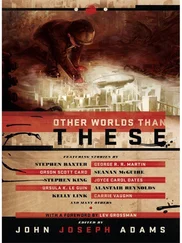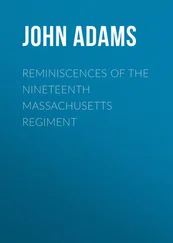During the first million years of its existence, mankind survived five apocalypses without succumbing to extinction. It endured the Apocalypse of Steel, the Apocalypse of Hydrogen, the Apocalypse of Serotonin, and both Apocalypses of Water, the second of which occurred despite certain contracts to the contrary. Mankind also survived the Apocalypse of Grease, which wasn’t a true apocalypse, although it wiped out nearly half of humanity by clogging the gears that ran the densely packed underwater cities of Lor, but that’s a tale for another time.
Humans laid the foundation for the sixth apocalypse in much the same way they’d triggered the previous ones. Having recovered their ambition after the Apocalypse of Serotonin and rebuilt their populations after the Apocalypse of Grease, they once again embarked on their species’ long-term goal to wreak as much havoc as possible on the environment through carelessness and boredom. This time, the trees protested. They devoured buildings, whipped wind into hurricanes between their branches, tangled men into their roots and devoured them as mulch. In retaliation, men chopped down trees, firebombed jungles, and released genetically engineered insects to devour tender shoots.
The pitched battle decimated civilians on both sides, but eventually—though infested and rootless—the trees overwhelmed their opposition. Mankind was forced to send its battered representatives to a sacred grove in the middle of the world’s oldest forest and beg for a treaty.
Negotiations went slowly since the trees insisted on communicating through the pitches of the wind in their leaves, which astute linguists played back at 1,000 times normal speed in order to render them comprehensible to human ears. It took a day for a sentence, a week for a paragraph, a month for an entire stipulation.
After ten years, a truce was completed. To demonstrate its significance, it was inked in blood drawn from human victims and printed on the pulped and flattened corpses of trees. The trees agreed to cease their increasing assaults and return forevermore to their previous quiescent vegetable state, in exchange for a single concession: mankind would henceforth sacrifice its genetic heritage and merge with animals to create a new, benevolent sentience with which to populate the globe.
After the final signatures and root imprints were applied to the treaty, the last thing the trees were heard to say before their leaves returned to being mere producers of chlorophyll was this: At least it should keep them busy for a millennium or two, fighting among themselves.
Part Two—The Animals Who Lived as Men
Mankind, as history had known it, was no more. The new hybrids wore bodies constructed like those of mythological beasts, a blend of human and animal features. They scattered into the world’s forests, deserts, jungles, and oceans, where they competed with unmixed animals for food and territory.
If some ancient legends were to be believed, men were only returning to their ancient roots as dolphin and lizard, raven and grizzly bear. Other traditions would have been appalled that man had cast himself down from his place at the apex of the chain of being and been consigned to the lesser links below.
Intellectuals became the whale men, who kept their faces, but lost their bodies for the streamlined shape of cetaceans. Their sentience blended with the intelligence already inhabiting those massive, blubbery forms. They indulged in abstract philosophy as they swam through the ocean depths in a silence created by the first absence of shipping lines in five hundred thousand years.
Pilots and acrobats became glider men, acquiring huge eyes, wing flaps, and nocturnal habits which served them well as they arrowed from tree to tree in forests that echoed with their eerie sonar calls. Eight-armed crab men spent their days skittering up and down beaches dancing for the gulls; spotted jaguar men skulked through forests; cold-blooded turtle men inched through years; flattened stingray men lurked on river bottoms, awaiting unwary travelers.
For the first twenty thousand years, mankind peacefully coexisted in all its forms. After that, the buried genetic contribution of the human mind bubbled to the surface.
“The treaty is an outgrown shell to be discarded,” young crab men gestured defiantly with their third and sixth arms. Crab matrons clacked their claws in outrage, but who could control the youth?
The most extreme of the crab men formed a rebel sect called the Weeders. They wove strands of kelp around their eyestalks and ritually cut their seventh arms, searing the wounds with a mixture of brine and gull guano. At first, they expended their rage on symbolic targets: dumb unblended seabirds, or rocks shaped like dolphin men. And then a juvenile Weeder called Long Stalks found an injured seal man bleeding on the beach and dragged him home in time for the evening convocation. The Weeders tore him to pieces, rubbing themselves with his blubber and parading in his fur. The meat they left to rot.
When they discovered the decaying corpse, the crab matrons went to the seal men with offerings and apologies, but the seal men refused to hear diplomacy. They clipped off the delegation’s claws and sent the mutilated ambassadors home with a terse condemnation: “You didn’t even have the courtesy to eat him.”
Seal and crab men hunted each other to extinction in less than a decade. The last crab man sidled four hundred miles inland to a camp of parrot men before expiring with a curse on his lips.
Soon it was hyena man versus eagle man and frog man versus capybara man, then tiger and spider and cockatiel men against snake and giraffe and ostrich men. Amidst the hectic formation and betrayals of alliances that seethed on the battlefield, only one order created a stable federation. These were the insect men, greatest of all the species of men in their variety and achievements.
Their infantry were the mosquito men, fearsome female warriors with the muscular bodies of amazons topped by tiny, blood-sucking heads. They marched wherever battle raged, drinking the blood of fallen soldiers. They were sliced and swatted, crushed and grasped in giant crocodilian jaws, but still the indomitable parasites survived to carry samples of their victim’s blood back to their superiors, the butterfly men.
Oh, the tragedy of the butterfly men, wisest of the insect men, whose useless jewel-colored wings draped from their slender shoulders like robes. These were the descendents of the geneticists who engineered the destruction of mankind, innocent victims of their ancestors’ self-flagellation. Forced to subsist on honey and chained to a lifespan of less than a week, these shrewd but ephemeral leaders did not even enjoy the consolation of flight. Instead they lingered in forest glades looking pale and melancholy. Liable to terrible moods, they made love in the underbrush one moment and shredded each other’s wings the next.
Yet the geneticists’ legacy was not entirely bad, for they had left their descendents the gift of instinct: inscribed into the rapid pathways of their ephemeral brains lay an intricate understanding of DNA and genetic manipulation. Using this knowledge, the butterflies divined their enemy’s secret anatomical weaknesses from the blood samples which the mosquito men brought to them. Generations of butterfly men scrutinized each vial in order to create fatal viruses which would massacre their enemy’s ranks.
Only when the last disease had been designed did the butterfly men let loose the fruits of their labor. Simultaneously, a hundred deadly plagues seized their victims, sweeping across the earth in a single night. By morning, only the insect men remained.
High on an isolated cliff in a desert that had once been the Amazon, a cluster of hardy Joshua trees broke their ancient silence to speak once more. Wind rushed through the prickly tufts of their leaves, rustling out a single sentence: That didn’t take long, did it?
Читать дальше












